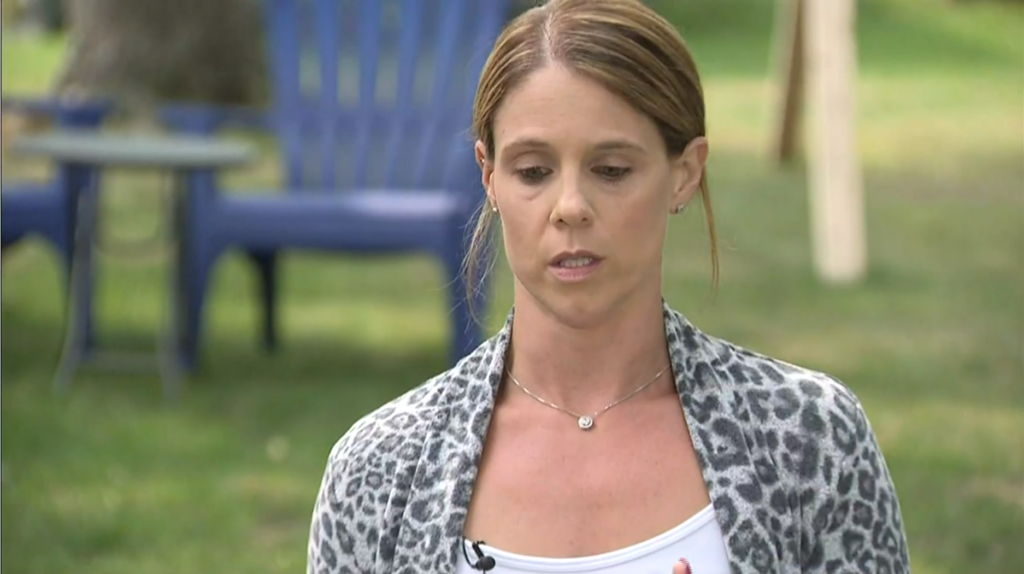
A Boston-area mom had a scary moment last weekend, when her 8-year-old son became inexplicably tangled up in a seat belt and started choking. Somehow, he was nearly hanging from the ceiling of the vehicle, near where the belt was attached at the top. Nobody’s really sure how it happened, but it doesn’t really matter. What’s important is the boy is alive and well, thanks to his quick-thinking mom. Let’s talk about what Siobhan Sherbovich did right even though something unimaginable happened and she had no mental script to follow to rescue her son:
As soon as she realized something was wrong, she stopped her car and tried to unbuckle the seat belt. Trying the obvious is an excellent first step. Not every emergency needs more than the simple expedient of calmly doing the thing that works under normal circumstances and seeing if attempting it is enough when everything is a little more complex. The key here is to be as calm as possible about it instead of introducing that panicked jerkiness that can make everything worse. I know that’s easy to say, but hard to do. Having it in your head about the importance of staying calm is a good start to doing so, though. It’s also important to not become attached to trying that step over and over again, becoming fixated on making it work. Instead, let’s follow Siobhan’s excellent example a little further…
When trying to unbuckle the seat belt didn’t work, she didn’t keep struggling with it or throw up her hands in despair. She immediately figured out another plan and put it into action by running to a nearby hair salon. Why? Because hair salons have scissors. That’s great problem-solving under pressure. I also really like her reported attitude of being ready to break down doors and windows to get to those scissors, if the salon wasn’t open. It might not have been the most efficient solution, but the mindset of being willing to do what it takes and get through barriers is a necessary one when it comes to survival. Because while you should be able to quickly abandon a strategy that’s not working, you should not quickly abandon the attempt as a whole.
Would it have been better if she had a seatbelt cutter, scissors, or knife in her car? Sure. And I bet that’s a lesson she’s going to keep in mind and probably spread around. Me, I like the Benchmade Rescue Hook (affiliate link because I like cash moneys: https://amzn.to/33AzuUN) and similar tools because they reduce the risk of accidentally cutting the person you’re trying to save, but any cutting tool will do.
Going for scissors at the hair salon had another benefit: Siobhan also had one of the employees there call 911. Getting emergency help on the way makes a difference. They might not get there in time – and that’s a good reason not to call them immediately at the cost of working on the rescue right away – but the sooner they arrive, the better, especially if complications become even worse. Perhaps Siobhan could have had one of her other children call, or even used voice dial in her car, but that would have split her attention away from saving her son.
In any case, the scissors worked and the strangulation was stopped. Unfortunately, not before the boy was already unconscious. That’s something else to keep in mind: saving someone from an acute danger doesn’t mean that they’re entirely out of the woods. The injuries that result can require further treatment. That’s why we call emergency services and that’s why we must stay alert to further problems. Until everyone is known to be safe, you have to keep working towards that. Here, Siobhan had to perform CPR on her son and it sounds like however far she got with it before he woke up, it happened before emergency services arrived. As you can see, CPR isn’t just for the classic heart attack and collapse. It has far wider applicability and that’s why if you don’t already have that training, you should get it. Right now, with busy schedules and continuing quarantine restrictions, finding an in-person class can be tough, but even an online class will give you some knowledge (and they’re affordable! See https://www.redcross.org/take-a-class/cpr/cpr-training/cpr-online).
Going back to calling emergency services…was it necessary? Maybe, maybe not. But at the moment they were called, nobody could have known if they would be needed. If they had been, better to have them already on the way or at the scene. And even though it seems that the boy was free from the seatbelt and conscious by the time they showed up, having them there could have helped ensure that no further treatment was needed. Because after the crisis is over is when you might start to freak out and fall apart, and when you might notice other injuries that need attention or to make sure that none of the injuries that were suffered were anything other than minor.
It’s always fantastic to see a potentially bad situation go well. Staying calm and continuing to work towards a safe resolution while the danger continues go a long way, especially when paired with skills, tools, and creative thinking. And now if you see another situation with any similarities at all, you have some ideas to spark that creativity in you.
PS – The interview is amazing. See it here: http://bit.ly/OHO-SeatBeltAccident




